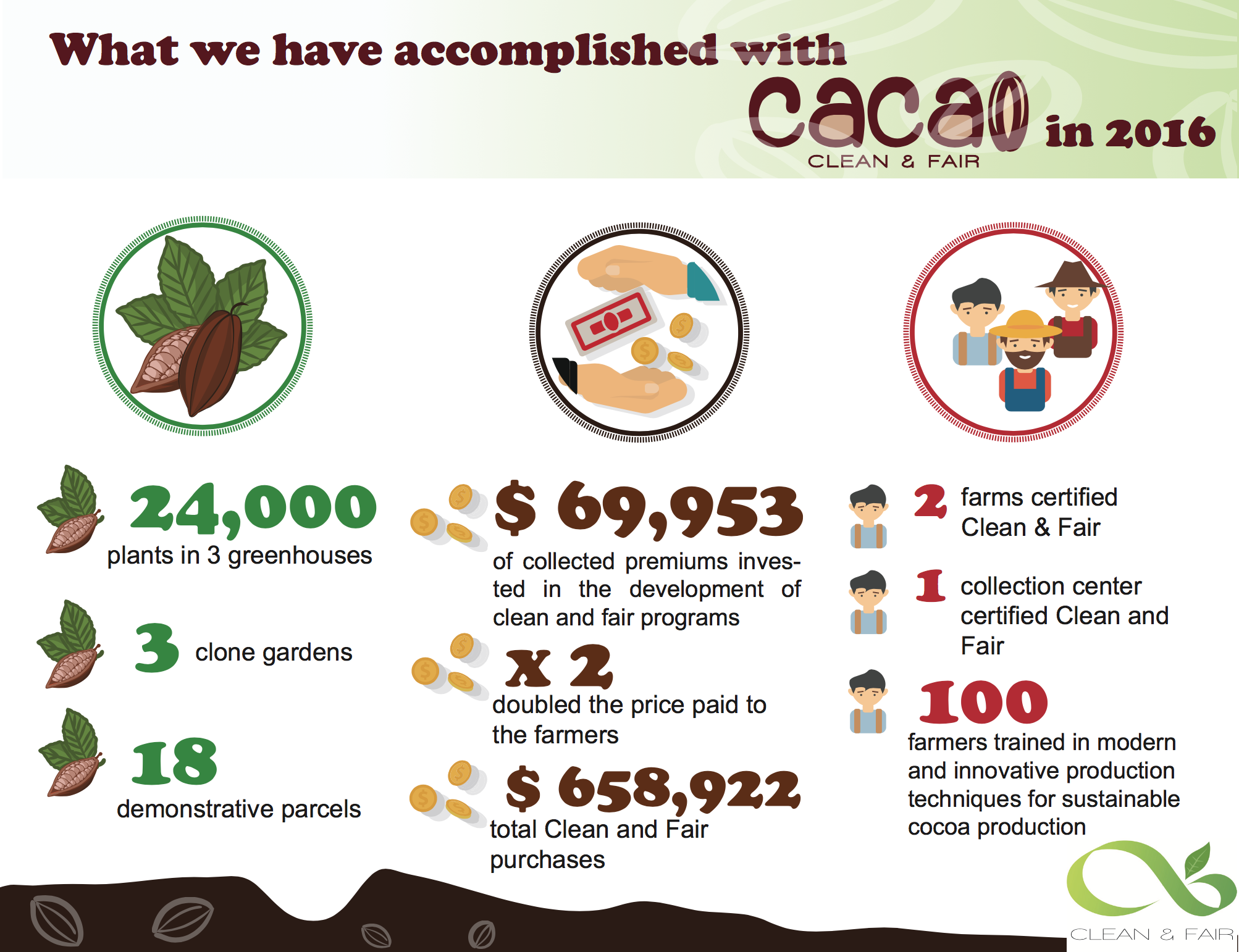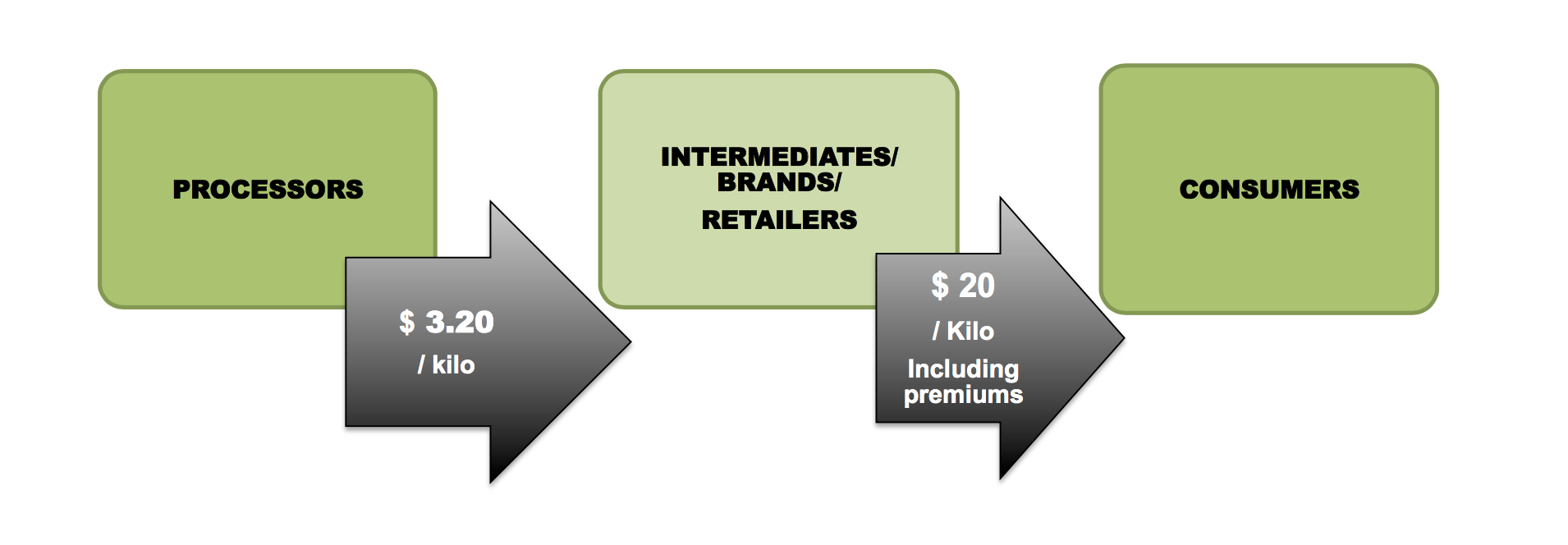BETTER QUALITY CROPS, BETTER YIELDS, BETTER INCOME, BETTER LIVING!
An essential part of our work is to make sure Clean and Fair certifications are generating real, measurable benefits to all involved.
We need to assess the impact of our work to be certain that our initiatives are helping us reach our goals.
We also measure impacts to show that Clean and Fair certifications can be an effective tool for increasing farm productivity, reducing poverty, and generating healthier natural ecosystems in and around the farms.
We measure variables such as number of participants involved in our certification programs, number of farmers benefitted, farming areas affected positively, volume of premiums obtained, increases in income for farmers, among others.
Measuring impacts also allows us to compare the effectiveness of our actions with respect to other certification programs:
Reduced costs and increased premiums
The following example illustrates the costs involved in a conventional fair-trade value chain for the commercialization of organic cacao, compared to the Clean and Fair model. We have used actual market prices from April 2018.
In both cases, the cacao beans is bought from the farmers at fair, negotiated rates. It is then transported to the U.S. to be processed, separating cacao butter from pure cacao powder.
A classic Fair-Trade value chain involves
Whereas the Clean & Fair value chain simplifies this to
* The 0.24 US$ / Kg. premium is collected by the 1st intermediate and re-invested by Clean and Fair in training and capacity-building to improve sustainable agricultural productivity for the beneficiary producers
** The 0.10 US$ / Kg premium for each additional intermediates or brands will be directly delivered by Clean and Fair to the farmers
Thus, the final price to the consumer of Clean and Fair – fully certified products, based on April 2018 rates, will be 50% less than the corresponding Fair-Trade value, whereas the producers will receive premiums that are at least double those obtained from other models.



